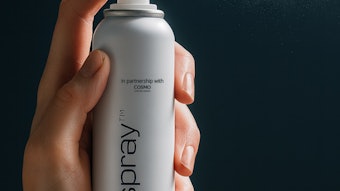
A key takeaway from the 2025 Cosmetic Global Exhibition was that consumers Claudia Gutuleac, marketing manager, Sensient Essential OilsCourtesy of Sensient Essential Oils
Claudia Gutuleac, marketing manager, Sensient Essential OilsCourtesy of Sensient Essential Oils
Log in to view the full article
A key takeaway from the 2025 Cosmetic Global Exhibition was that consumers Claudia Gutuleac, marketing manager, Sensient Essential OilsCourtesy of Sensient Essential Oils
Claudia Gutuleac, marketing manager, Sensient Essential OilsCourtesy of Sensient Essential Oils
In short, natural ingredients are no longer optional. Moving forward, natural, sustainable, simple ingredients are a baseline expectation of consumers, and labels need to reflect that. Research by Euromonitor confirms that essential oils are viewed as eco-friendly, natural alternatives to synthetic fragrances.
Essential oils offer a range of solutions for helping product developers meet clean-label goals while also appealing to consumer preferences for a simpler lifestyle with meaningful connections to products from source to shelf.
Aligning Labels with Trends
While the term clean label can mean slightly different things in different situations, Matthieu Girard, general manager, Sensient Essential OilsCourtesy of Sensient Essential Oils
Matthieu Girard, general manager, Sensient Essential OilsCourtesy of Sensient Essential Oils
Essential oils enable labeling with easily recognizable plant names. Rosemary essential oil appears in the ingredient list as Rosmarinus officinalis leaf oil; lemon essential oil as Citrus limon peel oil. These names are simple to interpret and understand, innately evoking the natural source rather than a synthetic chemical.
These easily identifiable ingredients also correlate to functional associations. Aromatherapy and essential oils are increasingly being used for their perceived benefits in promoting relaxation, reducing stress and enhancing mood. For example, lavender is known to create calm and aid sleep while lemon is considered refreshing and energizing.
Furthermore, consumers are demanding products that not only deliver on performance but also prioritize environmental responsibility. According to Mintel’s 2025 Beauty & Personal Care Trends, a new wave of brands are embracing green chemistry and use sustainably sourced botanicals to ensure that efficacy isn't sacrificed for sustainability. At Sensient Essential Oils, for example, we source locally to build strong relationships and trusted partnerships with farmers over time to manage inventory and ensure eco-friendly agricultural practices.
By creating a label that is more accessible and easier to interpret, brands are empowering consumers to choose products that match their values.
Benefits of Essential Oils for Labeling
In addition to aligning product labels with market trends and consumer preferences, there are a variety of benefits when formulating with essential oils that speak to both clean-label and clear-label goals:
- Match your branding to your label. The all-natural aspect of essential oils means brands can use images of the plant or botanical on packaging to reflect the fragrance and ingredients.
- Show transparency and model integrity. Vertical integration is an important tool to help control every step of the process from cultivation to harvest through distillation and processing. This vertical system allows full batch traceability from field to finished oil, supporting claims like “farm-to-formulation.” Your essential oils partner should be able to provide a Country of Origin certificate to validate the brand story.
- Use clear, understandable language. Increasingly, consumers want to be able to read and relate to each ingredient. Essential oils enable a natural connection from source to ingredient label.
- Share your sustainability story. All-natural ingredients like essential oils provide the traceability to confirm your sustainability claims.
- Meet regulatory standards. Make it easier to meet regulatory standards around all-natural claims with essential oils.
 One of the best ways to capitalize on the benefits of essential oils is to share the story behind your ingredients.Caseyjadew at Adobe Stock
One of the best ways to capitalize on the benefits of essential oils is to share the story behind your ingredients.Caseyjadew at Adobe Stock
Challenges and Considerations
When working with essential oils, it is important to partner with an experienced company with experts who can anticipate potential challenges and provide an array of solutions.
Some of the things developers should explore and understand when working with essential oils in product formulations include:
- Maintaining consistency in the face of natural variations
Challenge: Since essential oils are derived from plants (flowers, leaves, seeds and so on), their chemical profiles are influenced by geographic origin, climate and seasonal variation, harvest timing, soil composition, processing methods and timelines. This variability creates challenges in maintaining consistent quality and efficacy across production batches.
Solution: Standardization techniques help create consistent quality. Creating essential oils natural compositions allow formulations to stay within defined ranges and specifications for scent profile, color and other parameters. By understanding the complexities of natural variability and leveraging standardization techniques, product developers can harness the power of nature without compromising on quality, consistency or performance.
- Managing the innate hue of natural sources
Challenge: Some essential oils naturally carry a distinctive color due to pigments of their source plants, which can affect the aesthetics of the final product, especially clear gels, lotions or serums. For example, thyme oil can range from pale yellow to reddish-brown.
Solution: Essential oil experts use a process called rectification to remove color-creating components. In the thyme oil example, rectification yields a more refined and colorless version called white thyme oil, which is suitable for light-colored or transparent formulations.
- Minimizing sensitivity to high concentrations
Challenge: Since essential oils are so pure and highly concentrated, some people can experience skin sensitivity.
Solution: There are techniques for mitigating sensitivity by reducing specific molecules that could cause allergies.
- Managing price variation
Challenge: Essential oil prices fluctuate due to factors like harvest quality and global demand, making it difficult for personal care producers to maintain consistent product costs. These variations can disrupt budgeting and affect pricing strategies.
Solution: Producers can manage risks by using essential oil natural compositions without compromising quality and ensuring consistency in every batch.
- Ensuring transparency and integrity
Challenge: You can find different levels of quality of the essential oils on the market, and some of them lack clarity in product communication and documentation that may lead to mistrust among consumers in the long term.
Solution: Work with an essential oil company that has a long-standing reputation for their knowledge, expertise, exceptional quality and integrity. Experienced companies like Sensient Essential Oils place a priority on quality control, transparency and product safety.
Unique Opportunities for Growing Share of Market
Personal care product reviews and endorsements are some of the most popular segments for social media influencers. Modern brands understand the need to capture the attention of both consumers and those centers of influence.
One of the best ways to capitalize on the benefits of essential oils is to share the story behind your ingredients. Essential oils help create that vibrant visual of a product’s origin story. For example, rosemary essential oil was culled from rosemary grown in the Mediterranean countryside, thriving in sun-drenched fields and harvested at peak potency. This origin story helps consumers find products they connect with based on their own personal priorities and values.
When brands highlight the origin of their ingredients, they invite consumers on a journey – a journey that often includes cultural heritage, sustainable farming practices or empowerment of local communities. This narrative can create emotional depth in brand communication, connecting with consumers’ growing desire for transparency and authenticity.
Interestingly, there is a growing industry focus on measuring the emotional impact of scents and fragrances. Rather than simply incorporating a pleasant scent in a personal care product, brands should be looking to evoke an emotion or arouse a memory related to a delightful experience the consumer wants to relive or recreate. Spur a festive feeling or promote relaxation based on an aroma recall-and-response.
The slow-and-simple-living trend is an everyday example of an emotional response to clean labeling. Consumers are looking for ways to simplify life in a complicated and overwhelming world. Easy-to-understand ingredients like essential oils help create a short, simple, clear-and-clean label that aligns with consumer values and speaks to their desire for a more basic approach to living.
Natural Consequences
Brands with all-natural labeling goals should consider essential oils as they simplify formulations and ingredient labels. Essential oils enable all-natural product claims and meet regulatory requirements with transparency and integrity, building trust with your brand audience.
Essential oils create emotional connection with consumers who want a slower, simpler lifestyle that helps them envision the origin story of their personal care products in a way that feels truly personal and special. They tap into multiple senses to evoke stronger associations with the functionality of personal care products.
An experienced partner can help product developers maximize the advantages of essential oils while avoiding common challenges that come with converting formulations to meet all-natural labeling goals. All-natural is no longer a unique product category; it’s a baseline expectation across the personal care product market.
What creates differentiation moving forward is the ability to bring all-natural products to market with functional ingredients, sustainable sourcing practices, and a back story that evokes an emotional connection.










